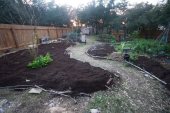
 1
1




Idle dreamer





Roxanne ...AKA Wilde Hilde
"Ensnar'd in flowers, I fall in the grass."-Marvell




Sofien 'Koro' Gueddana, Permaculture Fanatic 
Blog : http://permaground.wordpress.com/
Wiki : http://permaground.wikispaces.com/
Facebook: http://www.facebook.com/PermagroundRasJebel




Idle dreamer




Sofien 'Koro' Gueddana, Permaculture Fanatic 
Blog : http://permaground.wordpress.com/
Wiki : http://permaground.wikispaces.com/
Facebook: http://www.facebook.com/PermagroundRasJebel




Idle dreamer
 1
1




"You must be the change you want to see in the world." "First they ignore you, then they laugh at you, then they fight you, then you win." --Mahatma Gandhi
"Preach the Gospel always, and if necessary, use words." --Francis of Assisi.
"Family farms work when the whole family works the farm." -- Adam Klaus




Idle dreamer









Idle dreamer









Idle dreamer








![Filename: jordan-swales.jpg
Description: [Thumbnail for jordan-swales.jpg]](/t/22488/a/8318/jordan-swales.jpg)




dj niels wrote:In semiarid climates we do have to plan for irrigating to get trees established. However, the ideal most of us seek for, I believe, is to space plants, and use land shaping, mulches, woody beds, etc to reduce the need to keep irrigating, and eventually let the garden become a self-watering, self-sustaining system. So I believe it is wise to maintain a wide enough spacing that the garden/grove is not dependent on continual watering just to survive, though it may be necessary to occasionally add water in time of severe drought.

|
Could you hold this puppy for a sec? I need to adjust this tiny ad:
The new kickstarter is now live!
https://www.kickstarter.com/projects/paulwheaton/garden-cards
|



